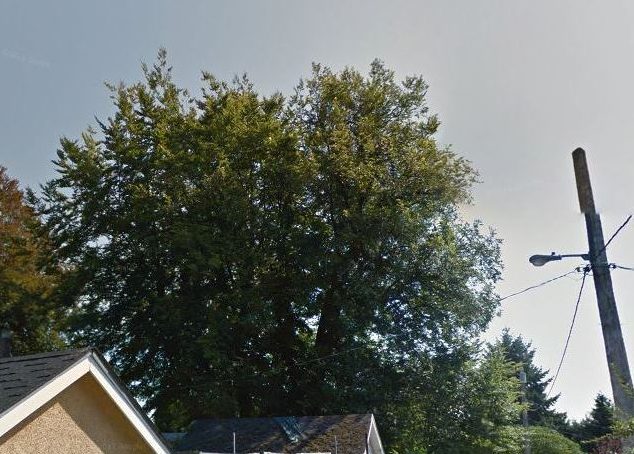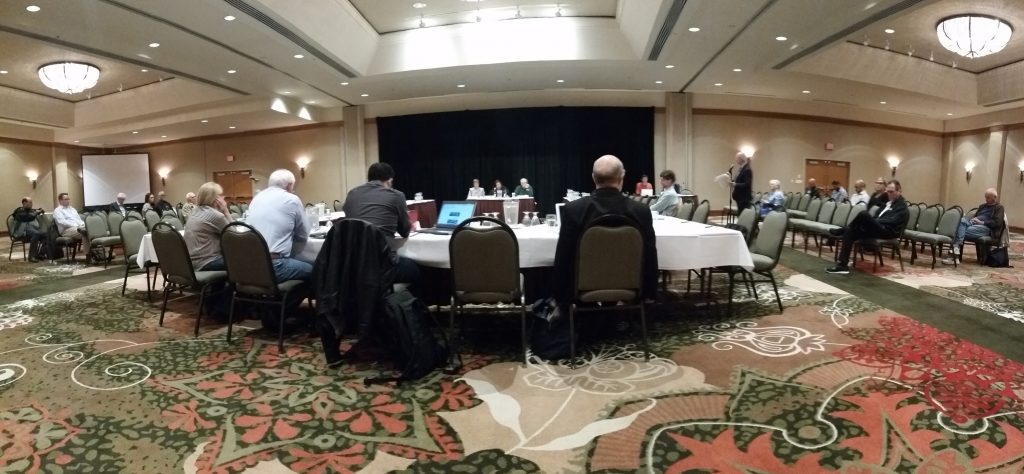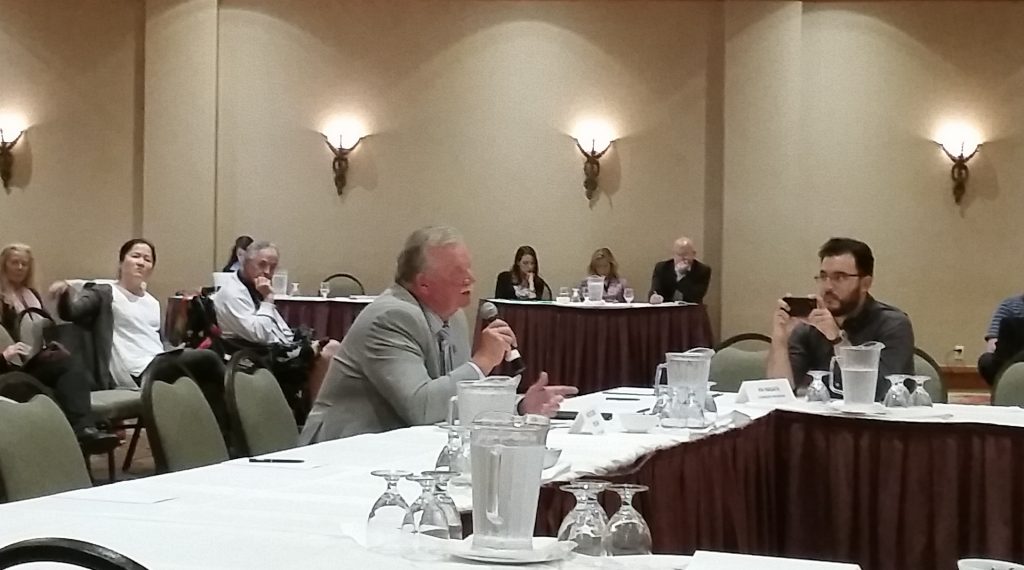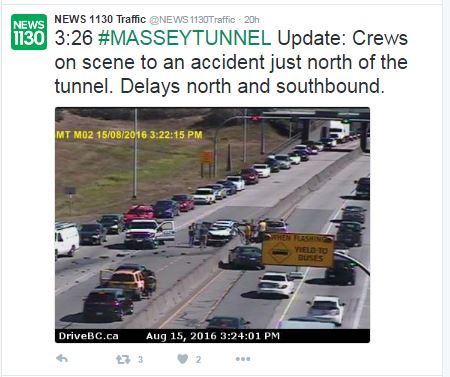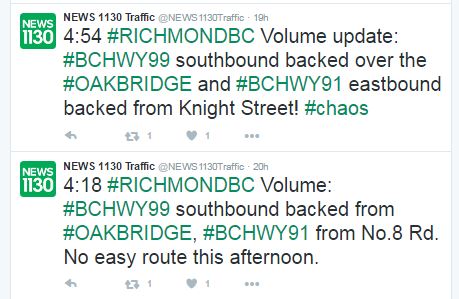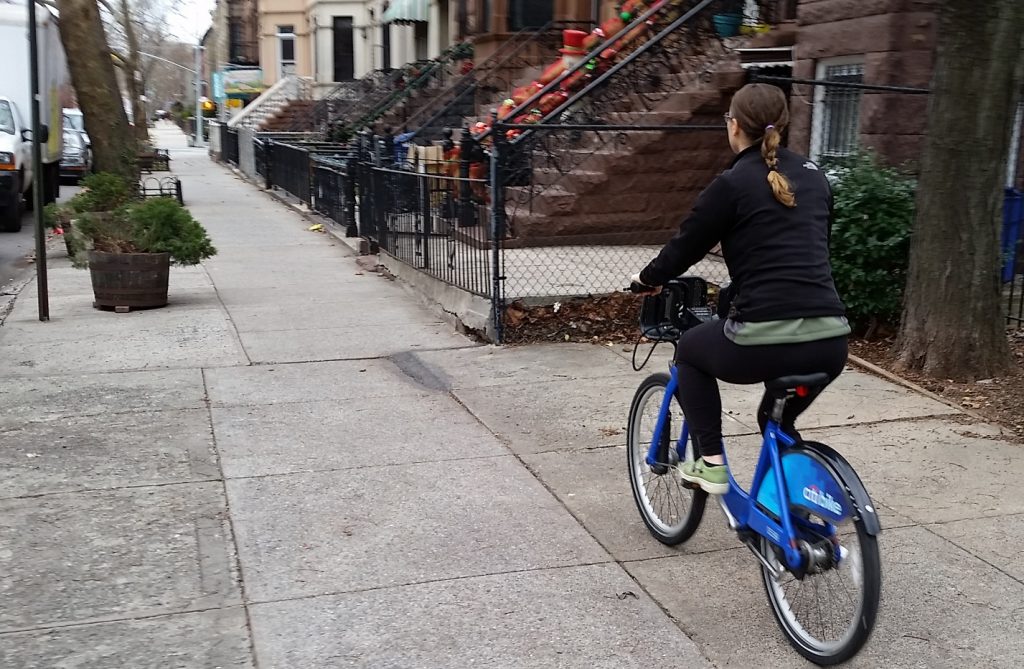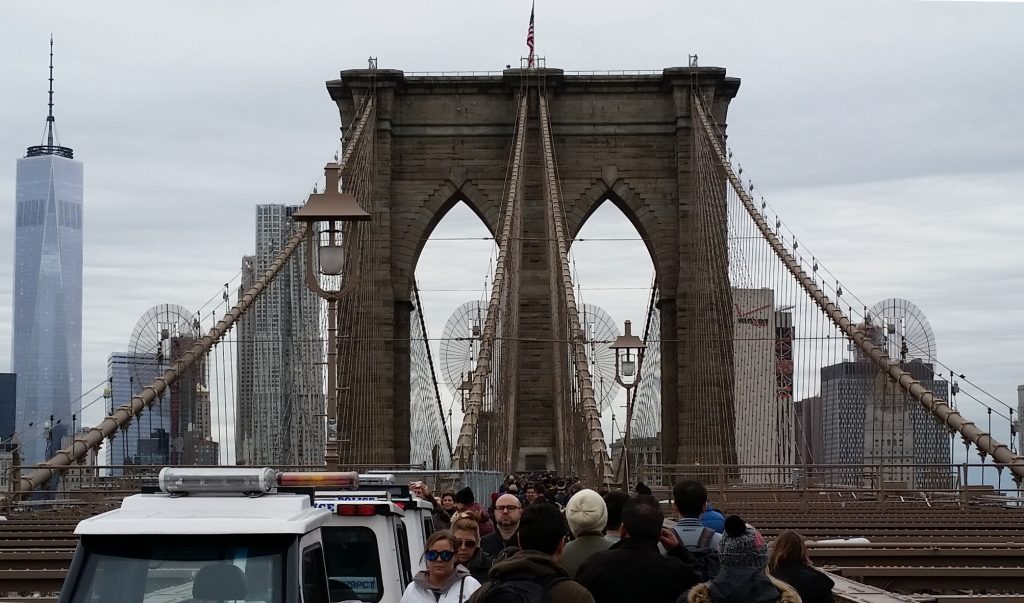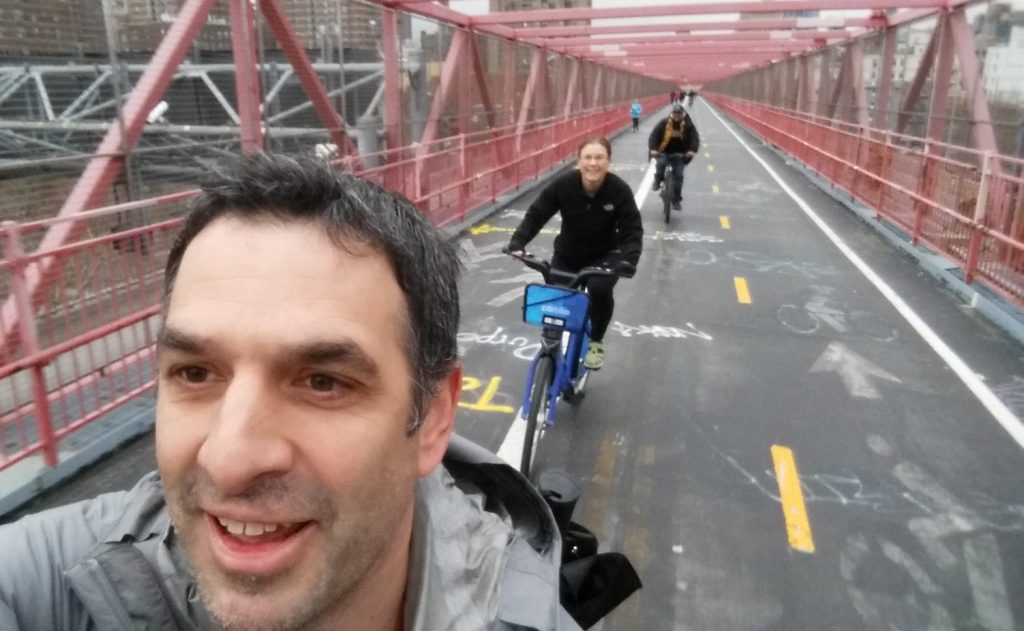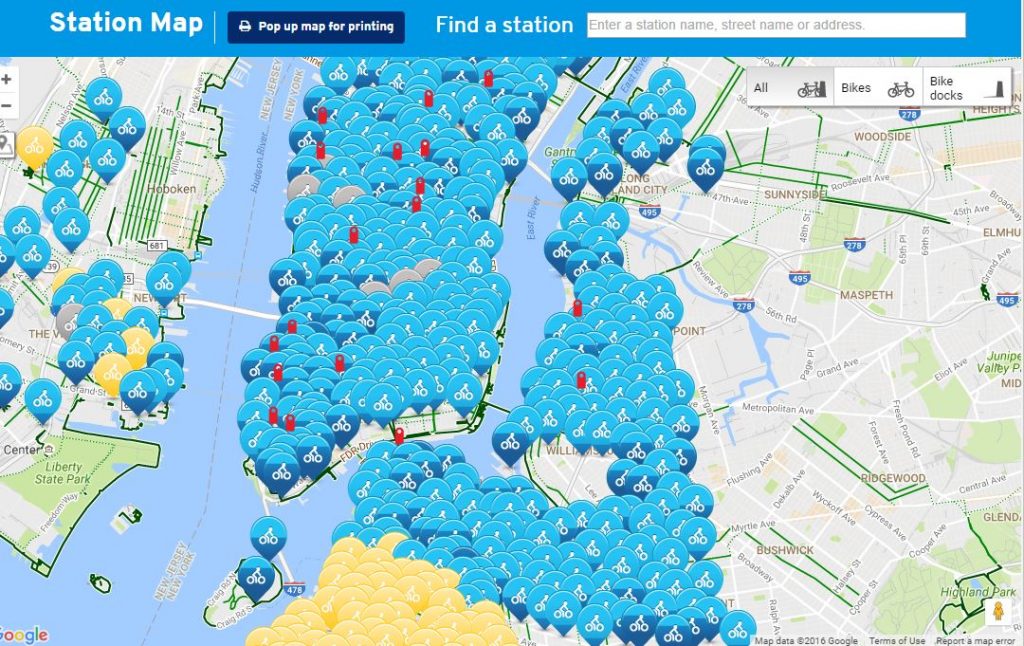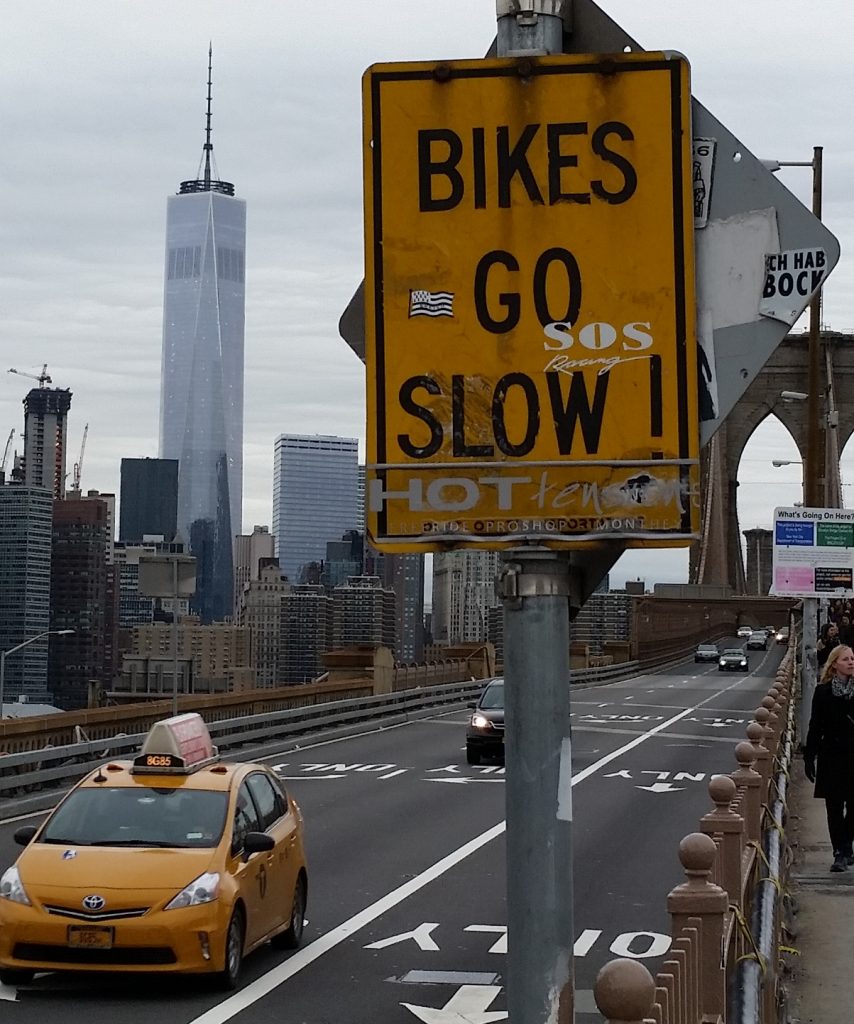So we went to Portland on the Labour Day long weekend.
The one in Oregon, the city notable for its place-making street cred, for its plethora of funky beer choices, and for its spamming New West with roses planted by people in capes. I hadn’t been to Portland for probably 20 years, so I swung a 4-day weekend and we hit the rails. Instead of a long travelogue, I just want to blog a few short impressions of Stumptown from what was, basically, a first visit.
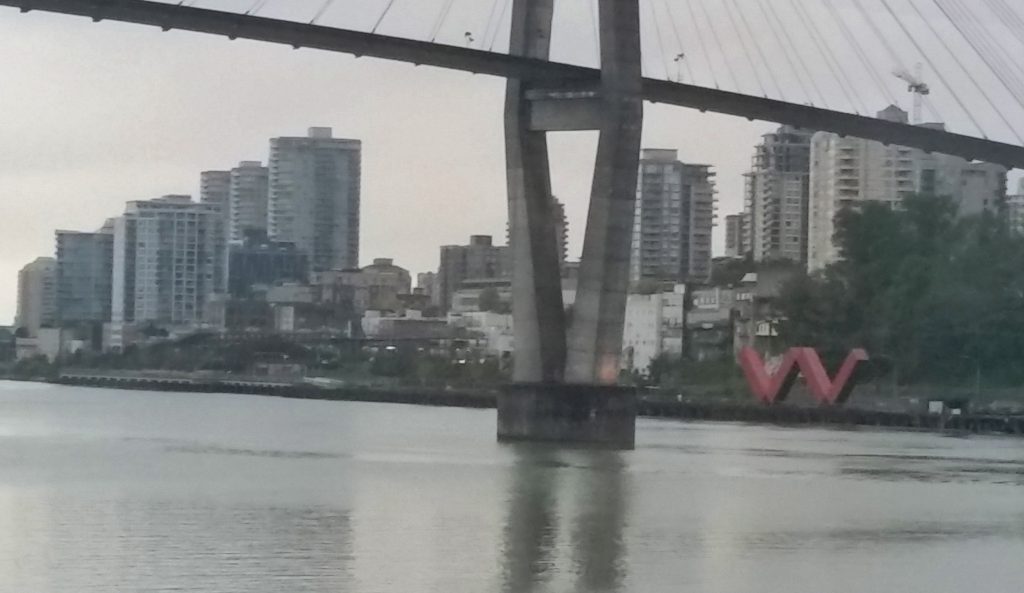 Travelling by train is very civilized. The pace is right, you can enjoy the journey, I got a bit of work done. It was fun to see New West go by from the train bridge, even if it was hours after we left New West to get to the train. Having an Amtrak station in New West would be great, but there might be a stronger case for putting one in Surrey by Scott Road Station…
Travelling by train is very civilized. The pace is right, you can enjoy the journey, I got a bit of work done. It was fun to see New West go by from the train bridge, even if it was hours after we left New West to get to the train. Having an Amtrak station in New West would be great, but there might be a stronger case for putting one in Surrey by Scott Road Station…
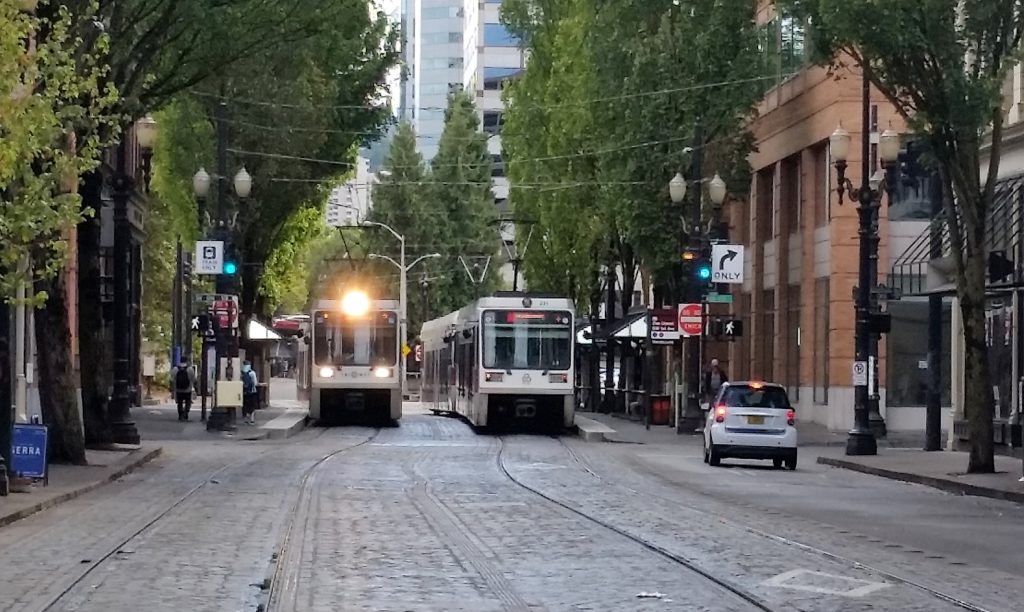
There are some incredible streets in Portland. The Pearl District area and much of Downtown all the way to Portland State University has leafy, historic, sometimes cobbly, and clearly multi-modal streets. At times, you get a seriously European feel to the streets, except they are generally wider and more open that found in historic European Cities. And there are a lot of one-way streets, which kind of removes the Euro-feel, but makes “jaywalking” a lot easier.
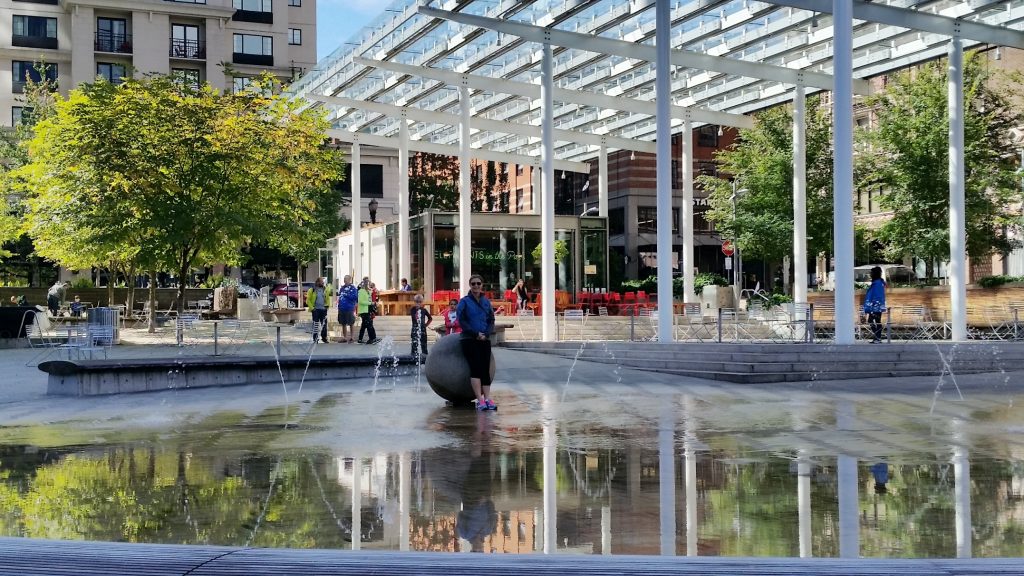 Clearly, Portland has put a lot of thought into ways to keep their streets and public spaces friendly, or “sticky” in the Jacobsian sense. Public drinking fountains, well designed (and utilized!) stand-alone public bathrooms, squares with large fountains clearly designed to be played in on hot days as opposed to viewed from a respectful distance, and many newer spaces designed to blur the line between public and private spaces. There is a lot of reason to be on the street, and spend a bit of time watching the world go by – or “loitering”, as some may call it.
Clearly, Portland has put a lot of thought into ways to keep their streets and public spaces friendly, or “sticky” in the Jacobsian sense. Public drinking fountains, well designed (and utilized!) stand-alone public bathrooms, squares with large fountains clearly designed to be played in on hot days as opposed to viewed from a respectful distance, and many newer spaces designed to blur the line between public and private spaces. There is a lot of reason to be on the street, and spend a bit of time watching the world go by – or “loitering”, as some may call it.
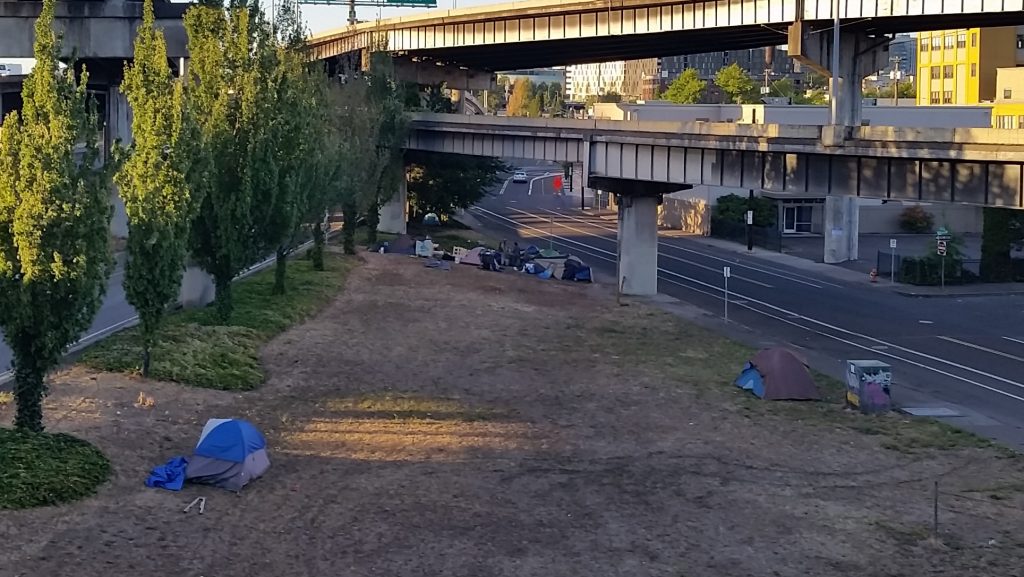 I’m, not sure why, but I was somewhat surprised by the serious number of homeless people in Portland. It seemed there were tents everywhere, and at least one well-established Tent City in the Little Tokyo area. Drug abuse and mental illness issues were apparent, and the gentrification of areas north of Downtown is happening in the midst of a lot of poverty. We never felt unsafe, but it is clear Vancouver isn’t alone in finding difficulty “trickling down” the prosperity.
I’m, not sure why, but I was somewhat surprised by the serious number of homeless people in Portland. It seemed there were tents everywhere, and at least one well-established Tent City in the Little Tokyo area. Drug abuse and mental illness issues were apparent, and the gentrification of areas north of Downtown is happening in the midst of a lot of poverty. We never felt unsafe, but it is clear Vancouver isn’t alone in finding difficulty “trickling down” the prosperity.
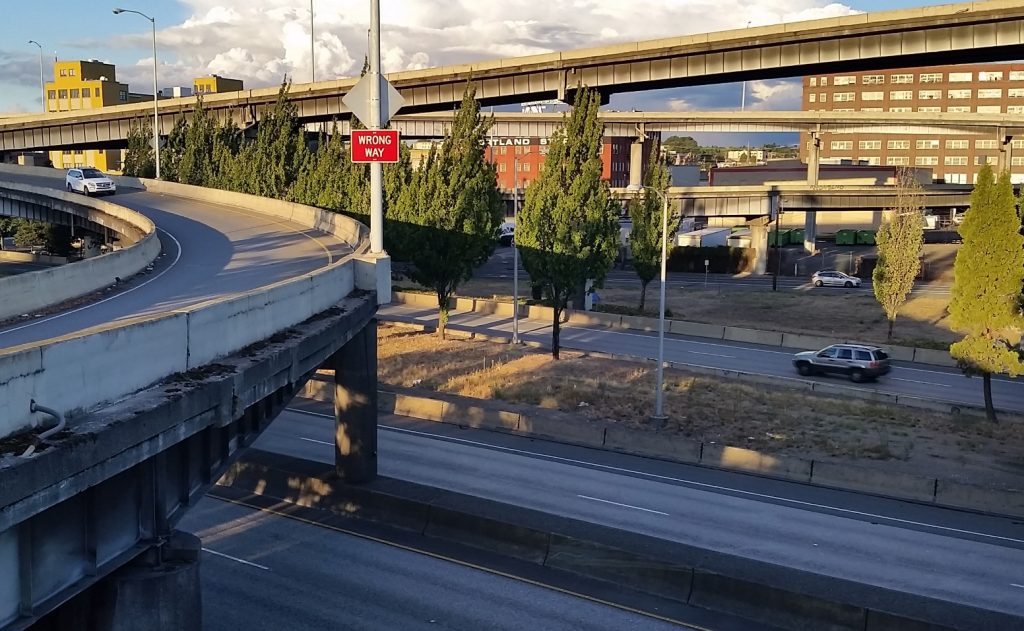 Wow, get away from the cool parts, and it is a short trip to freeway Hell. The contrast between the west shore of the river (where the Harbour Drive freeway was removed and turned into a park in the late 1970s) and the east shore (where I-5 Freeway stacks and flyways fill the skyline) is pretty much a case for choosing the kind of City you want. From all around the City, there are peek-a-boo views of stacked freeways. It would be interesting to study how the 4-lane I-405, which somewhat constrains the western expansion of Downtown, may actually add to the density and resultant vibrancy of downtown.
Wow, get away from the cool parts, and it is a short trip to freeway Hell. The contrast between the west shore of the river (where the Harbour Drive freeway was removed and turned into a park in the late 1970s) and the east shore (where I-5 Freeway stacks and flyways fill the skyline) is pretty much a case for choosing the kind of City you want. From all around the City, there are peek-a-boo views of stacked freeways. It would be interesting to study how the 4-lane I-405, which somewhat constrains the western expansion of Downtown, may actually add to the density and resultant vibrancy of downtown.
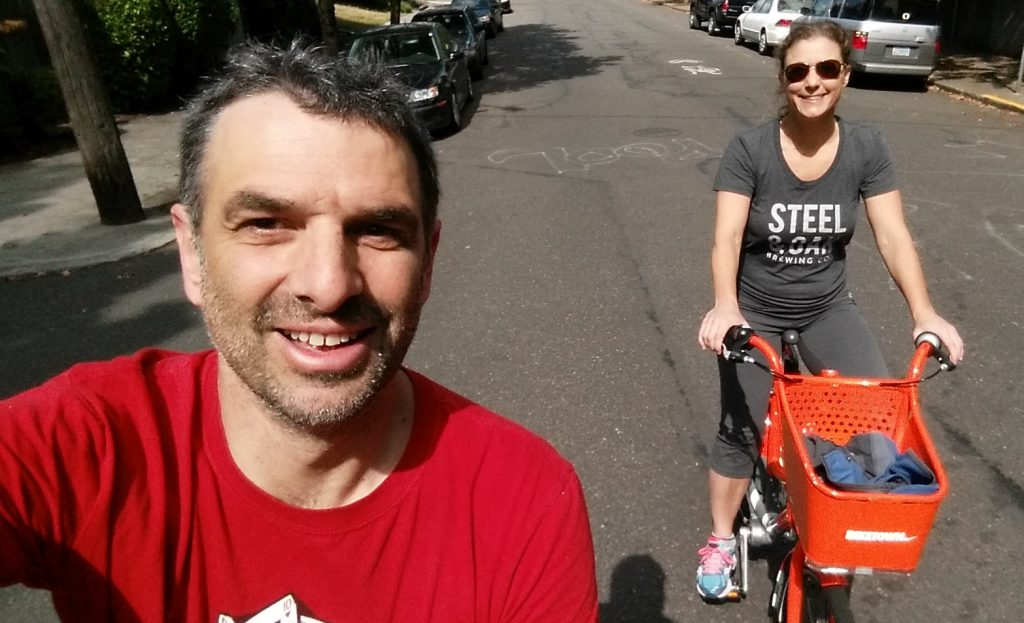 We rode bikes! Portland has a relatively new Bikeshare program, sponsored by some local shoe company. It is similar to, but different than, both Vancouver’s Mobi and New York’s Citibikes, mostly in that all of the electronics are embedded in the bike. A little solar-powered console above the rear wheel takes your info, controls the lock, and includes a GPS locator to tell where the bike is, meaning you can park it pretty much anywhere, not just at the designated stations. We paid $12 for a day pass, which gave us 180 minutes of rides. The system was easy to use, the bikes adequately tough and stable, and no helmet law required! (although I noticed most people on bikes were wearing helmets, probably more reflecting the inconsistent cycling infrastructure in most neighbourhoods than the need for a law).
We rode bikes! Portland has a relatively new Bikeshare program, sponsored by some local shoe company. It is similar to, but different than, both Vancouver’s Mobi and New York’s Citibikes, mostly in that all of the electronics are embedded in the bike. A little solar-powered console above the rear wheel takes your info, controls the lock, and includes a GPS locator to tell where the bike is, meaning you can park it pretty much anywhere, not just at the designated stations. We paid $12 for a day pass, which gave us 180 minutes of rides. The system was easy to use, the bikes adequately tough and stable, and no helmet law required! (although I noticed most people on bikes were wearing helmets, probably more reflecting the inconsistent cycling infrastructure in most neighbourhoods than the need for a law).
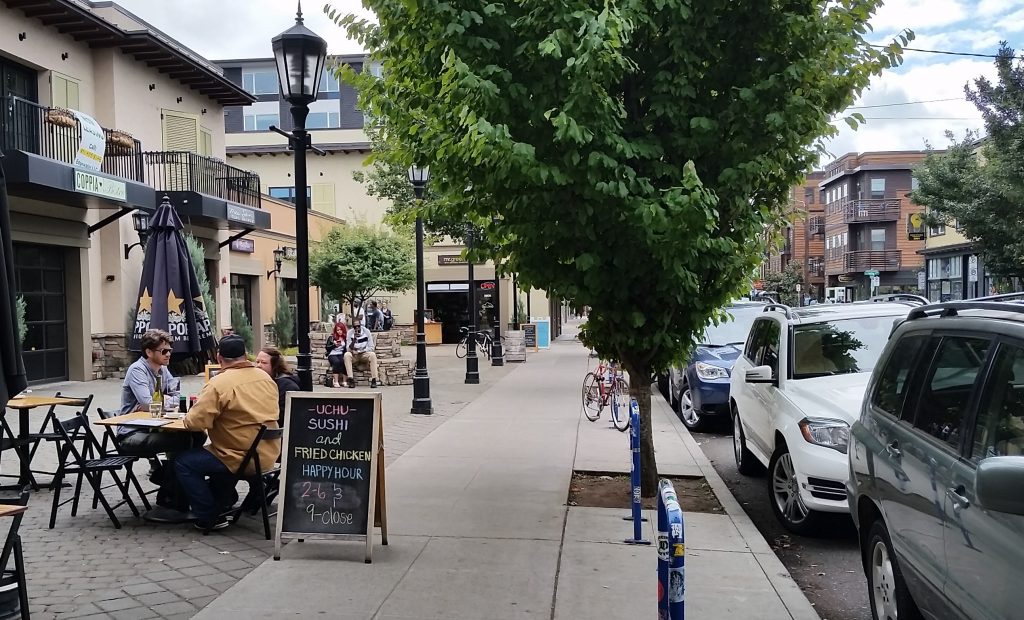 Once we had bikes, we crossed the River to Mississippi and Hawthorne, two commercial/residential neighbourhoods that were not suburb, but more the fringe of the urban area, rather like W41st in Kerrisdale or East Columbia in Sapperton. Both had their charms, but Mississippi won me over with a more human scale road. Mississippi Ave is 12m wide, two-lanes with parking; Hawthorne Blvd for much of its length is one of those 16m-wide 4-lane + central turn lane no parking behemoth stroads that suck the energy off of the street. Both were cool areas, worth the time to stroll, one just felt more like a place I wanted to spend time.
Once we had bikes, we crossed the River to Mississippi and Hawthorne, two commercial/residential neighbourhoods that were not suburb, but more the fringe of the urban area, rather like W41st in Kerrisdale or East Columbia in Sapperton. Both had their charms, but Mississippi won me over with a more human scale road. Mississippi Ave is 12m wide, two-lanes with parking; Hawthorne Blvd for much of its length is one of those 16m-wide 4-lane + central turn lane no parking behemoth stroads that suck the energy off of the street. Both were cool areas, worth the time to stroll, one just felt more like a place I wanted to spend time.
 There are a lot of food trucks in Portland, entire City blocks dedicated to their semi-permanent establishment. We appreciated them during our walks about, but I was a little surprised how their ubiquity didn’t actually foster much originality. Burritos, Shawarma/Gyros, and Pad Thai were ubiquitous, but there wasn’t a lot of kale tofu macaroni options. Why does mainstreaming something always take the fun out of it?
There are a lot of food trucks in Portland, entire City blocks dedicated to their semi-permanent establishment. We appreciated them during our walks about, but I was a little surprised how their ubiquity didn’t actually foster much originality. Burritos, Shawarma/Gyros, and Pad Thai were ubiquitous, but there wasn’t a lot of kale tofu macaroni options. Why does mainstreaming something always take the fun out of it?
 The Saturday farmers’ market at the South Park Blocks, however, was incredible. There is so much farming in the Willamette Valley, with a moderately warm climate, plenty of sun, and a long growing season, the variety of “local” fruits and vegetables is astounding. With a market like this, why would anyone ever go to Whole Foods?
The Saturday farmers’ market at the South Park Blocks, however, was incredible. There is so much farming in the Willamette Valley, with a moderately warm climate, plenty of sun, and a long growing season, the variety of “local” fruits and vegetables is astounding. With a market like this, why would anyone ever go to Whole Foods?
 Yes, peer pressure, after three days, finally dragged me into Powell Books. Skepticism verging on cynicism (I don’t have time to read any more books!) was abated by my seeing a book of Neal Stephenson essays, and a Robert Millar autobiography, which I both *had* to have. What a sucker.
Yes, peer pressure, after three days, finally dragged me into Powell Books. Skepticism verging on cynicism (I don’t have time to read any more books!) was abated by my seeing a book of Neal Stephenson essays, and a Robert Millar autobiography, which I both *had* to have. What a sucker.
 There was also some beer pressure. We stopped at several small to medium sized breweries and character tap houses. We tasted beer from the premises, and beer from far-off places like Bend, and Bellingham. We tasted barrel-aged beers, sours, barley wines, and Westcoast IPAs that were like concentrated hop syrup. We were often surprised, seldom disappointed. It was also nice to be immersed in an atmosphere where drinking beer was about flavours and aromas, creativity and locality. The tap house scene was brick walls and art, not TV screens and sports. We sat at the bar, told people our stories, an they told us theirs. The food was locally sourced charcuterie, not hot wings and dry ribs. The whole vibe was hipster to the max, but cool and comfortable.
There was also some beer pressure. We stopped at several small to medium sized breweries and character tap houses. We tasted beer from the premises, and beer from far-off places like Bend, and Bellingham. We tasted barrel-aged beers, sours, barley wines, and Westcoast IPAs that were like concentrated hop syrup. We were often surprised, seldom disappointed. It was also nice to be immersed in an atmosphere where drinking beer was about flavours and aromas, creativity and locality. The tap house scene was brick walls and art, not TV screens and sports. We sat at the bar, told people our stories, an they told us theirs. The food was locally sourced charcuterie, not hot wings and dry ribs. The whole vibe was hipster to the max, but cool and comfortable.
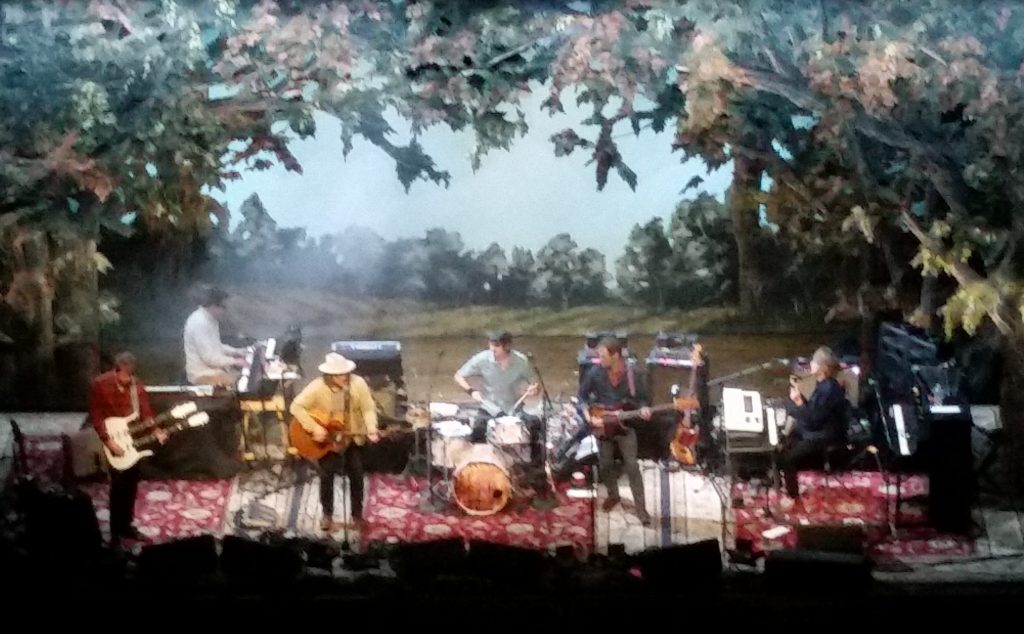 Finally, we saw a Wilco show. Which was remarkable. I have seen them many times in the past, but every time brings new and different pleasures. This was a softer, more laid back version of Wilco than some of the recent tours, which suited @MsNWimby fine, but they still blew the roof off with Spiders (Kidsmoke). Best quote of the night (I can only paraphrase) was Jeff Tweety describing Nels’ thrashing his beat-up Jazzmaster at the end of the otherwise-mellow Impossible Germany: “If you have a band, and you have a song, and you have a guitarist who can do that with it, you put it on the setlist every f’ing night!” I have to agree. Every time I see him play it, I swear it is it the greatest guitar performance I have ever seen. Every damn time. (the spine-shiver hits me at about 5:30 in the video below)
Finally, we saw a Wilco show. Which was remarkable. I have seen them many times in the past, but every time brings new and different pleasures. This was a softer, more laid back version of Wilco than some of the recent tours, which suited @MsNWimby fine, but they still blew the roof off with Spiders (Kidsmoke). Best quote of the night (I can only paraphrase) was Jeff Tweety describing Nels’ thrashing his beat-up Jazzmaster at the end of the otherwise-mellow Impossible Germany: “If you have a band, and you have a song, and you have a guitarist who can do that with it, you put it on the setlist every f’ing night!” I have to agree. Every time I see him play it, I swear it is it the greatest guitar performance I have ever seen. Every damn time. (the spine-shiver hits me at about 5:30 in the video below)
My overall impression is that Portland is fun, and an interesting place to spend time, but it reminds me that we do things really well here in Greater Vancouver. Portland has the laid-back Vancouver vibe (one we are perhaps losing?), but lacks the scenic surroundings. They do some streets and public spaces really well, but are clearly facing development pressures and expanding suburbs that limit their ability to calm their streets. The cost of housing looked like it was creeping up, if not to Vancouver crisis levels, clearly there were a lot of people left behind, and no apparent (to a passing tourist) effort to address the issue. By USA standards, it is an incredibly easy-to-visit city, with an active downtown, and has some cultural elements that really stand out, but it looks more fun to visit than to live there.
Maybe Bend.


